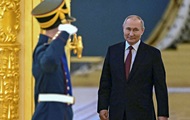The Caucasus does not want to fight for Putin?
–
–
Foreign Policy writes that despite the total control of the media, dissatisfaction with Putin’s war in Ukraine is growing in Russia.
Russia has been fighting in Ukraine for the fourth month already, the Kremlin says that everything is allegedly “going according to plan”, but even inside the Russian Federation, despite the total tightening of the screws, doubts creep in about the realism of this very “plan”.
Foreign Policy writes about the first signs of dissatisfaction with the war in the Caucasus.
Rebellion in South Ossetia
South Ossetia, annexed from Georgia, exists only thanks to Russia. The Kremlin decided to take the payment by the South Ossetian soldiers, who were sent to fight in Ukraine. Only in March, about 300 South Ossetian soldiers staged a mutiny, refused to invade and returned home. Adding to this shock was the subsequent publication by Mediazona of a conversation between some of the returned soldiers and the then president of the unrecognized republic, Anatoly Bibilov. The soldiers criticized the Russian military leadership and wondered why they were sent to fight for Russia in Ukraine. The soldiers’ mutiny and rejection of the war set the stage for Bibilov to lose the May 8 election in the region.
The fight against nationalism in the Caucasus
On the other side of the Caucasus, actually in Russia, is North Ossetia-Alania, whose inhabitants share a common culture and language with their southern counterparts. There, too, the war shook politics. In April, a former North Ossetian fighter for Russia’s puppet republics in eastern Ukraine was indicted under a new law to “discredit the Russian Armed Forces” adopted to quell protests and statements against the war in Ukraine. North Ossetian activists condemned the accusation as politically motivated. More furor followed after another North Ossetian who survived the 2004 Beslan terror attack that killed more than 300 people was charged with hate speech on May 11 when he called for Lenin Street in Vladikavkaz, the capital of North Ossetia, to be renamed honor of the Ossetians. The Mothers of Beslan, a group of activists representing the victims of the attack, condemned the allegations.
The Kremlin, however, remains wary of nationalism in the Caucasus, an ethnically diverse region conquered and enslaved by Russia in the 19th century, the site of horrific deportations and massacres by its Russian and Soviet rulers, and at times turbulent to this day.
Moscow has banned marches that were supposed to commemorate May 21, the anniversary of the genocide by the Russian imperial army of the Circassians, an ethnic group mainly living in the three northwestern Caucasian republics of Adygea, Kabardino-Balkaria and Karachay-Cherkessia. However, hundreds of people gathered in various places and arrests were reported by the police. However, this is unlikely to provoke a wider movement, even as reports of Russian genocide against Ukrainians in the ongoing war lead activists in the Circassian diaspora to draw parallels to their people’s history.
Ingushetia
The war was also felt in Ingushetia, another ostensibly autonomous ethnic republic nestled between North Ossetia and Chechnya. The nephew of Russian Deputy Defense Minister Yunus-Bek Yevkurov, the former leader of the region, was reportedly killed in combat last week in Ukraine. Shortly thereafter, Yevkurov and Ingush elders arrived at his funeral. The absence of any hint of unrest contrasts sharply with 2018, when significant local protests erupted following the Kremlin’s redrawing of Ingushetia’s border in favor of neighboring Chechnya.
Dagestan
Non-Russian minorities from the Caucasus and other fringes of Putin’s empire dominate the Russian forces fighting in Ukraine and those who died in Putin’s war for ethnic Slavic unity. According to public obituaries and social media posts compiled by Mediazona, Dagestan ranks first in the total number of war dead out of all administrative regions of Russia. Given the ratio to the population, North Ossetia-Alania has almost 400 times more war dead compared to Moscow. In Ingushetia and Kabardino-Balkaria, the ratio of population to the number of those who died in the war also significantly predominates.
This has drawn some comparisons to the early stages of the Soviet war in Afghanistan, when the invasion force included too many soldiers from non-Russian areas. Later, the Soviet army redeployed troops from the Soviet republics of Central Asia from forward positions, fearing that they were being too lenient on the Afghan civilian population.
Some observers even argue that the war in Ukraine, which has met with very little resistance in the heart of Russia, will lead to a national awakening in Russia’s peripheral regions, similar to the one that followed the Soviet war in Afghanistan. Echoes of that war began with small anti-war demonstrations in Tajikistan in 1982, three years after the invasion. Dissatisfaction with the war also contributed to the massive unrest in Kazakhstan in 1986, the largest display of local nationalism in Soviet Central Asia in decades. The chain of events unleashed by the unpopular war of the Soviet Union contributed to the emergence of the first sprouts of the independence movement in Central Asia.
–


